Aerial drones will gain access to much more US airspace this year. Some of our readers are understandably more than a little concerned about the fact that unmanned aircraft will be flying right alongside their manned counterparts, be they under military, government, commercial or private control.
Keeping pace with other technology, UAV’s Unmanned Aerial Vehicles) and their maritime and terrestrial counterparts, have become more affordable. So much so that you will soon see your neighbors operating them in your neighborhood, if you have not already.
Good or Bad?
On the upside, like other technology, drones help save lives, save money, protect our freedoms, protect the environment and are powerful tools in the hands of the military and law enforcement. Drones can perform many tasks that would be excessively dangerous or enter areas that would put lives at risk.
Most of us are probably familiar with their military applications, but here are some of their many beneficial non-military uses:
- Search & Rescue
- Disaster Relief
- Delivering Medical Supplies
- Wildlife Conservation
- Power Line Inspection
- Wild Land Fire Detection, Mapping and Fire Fighting
- Aerial Photography
- Archaeology
- Cinematography
- Oil & Gas Exploration
- Geography
- Weather Research
- Detection of CBRN (Chemical, Biological, Radiological & Nuclear) Agents
- Livestock Monitoring
- Surveying Crops
- Home Security
- Anti-piracy
- Maritime Patrol
- Law Enforcement
- Homeland Security
- Border Patrol
- Customs
On the downside, drones further extend the reach of a government that many feel is already out of control and have been misused to assassinate multiple American citizens, one of whom was only 16 years old. There was no trial or due process. No one was prosecuted or even lost their job. I doubt anyone even received a slam on the wrist, unless you consider high fives and commendations to be punishment.
So there is no question that drones will further erode the privacy of ordinary citizens.
The Gray Area of Drones
Simple consumer-oriented products range from less than $50 to several thousand dollars in price. Military UAV’s cost as much as $218 million apiece for the Global Hawk, the most expensive drone that we know about.
{adinserter emp}In the private sector, if you have the money to spend, someone will be happy to develop a solution that meets your needs … be you a private investigator, bounty hunter, drug dealer, killer for hire, terrorist, spy or something more mundane such as a surveyor, photographer or hobbyist.
The point is, with drones of types, shapes and sizes, spanning the gap from military jets to electric toy helicopters, and everything in between, it is going to be impossible to tell drones belonging to the good guys from those belonging to the bad.
Not all drones will take off from airports where they can be monitored, and identifying them will not be as simple as looking at a visual aircraft recognition card or spotting the tail number of an aircraft. We have a questionable record identifying planes as it is. How are we going to identify tiny drones the size of large insects?
Like most rapidly advancing technologies are creating all sorts of legal gray areas such as how UAV videography affects privacy, governmental accountability requirements, public access to government records … the list goes on. Rest assured that a drone arms race of sorts will ensue and the story of drug smuggling or terrorist activities using drones of some sort will be raised.
Then it will be spun. The government will need more and more drones to “ensure the safety of Americans.” Legislation will be passed and funding allocated “for the sake of our children.”
Look for the Proper Counter-UAV Strategy and Tactics
In survival circles, drone discussions inevitably turn to the topic of how to “take them down” or hide from them.
We also have had some questions from Survivopedia’s readers along these lines that I will respond to. They are all related so I will group them together and answer them in an explanation of counter-UAV strategy. Most of them can be grouped into the following reader questions:
1.) “Is using birds a good idea for taking them <drones or UAVs> down?”
I cannot think of any practical application of birds as an effective countermeasure with possible exception of the fact the flocks of birds and bird strikes are known to be very damaging to most airframes and the same would certainly hold true with UAVs. But I would think that getting birds to make a Kamikaze attack on a drone would be logistically burdensome even if it is possible.
2.) “How could you stay away from drones’ surveillance? “
Drones are great military tools, but part of their effectiveness psychological and part of it is drones is psychological. Those who use them want you to see drones as a scary black box. Instead, look at them as a collection of very understandable technologies integrated into a system. Once you understand how those systems work, you can go about countering them.
If you instead thinking, “How on earth am I going to fight a 218 million dollar weapon system called a drone!?” and then picturing something from Star Wars and buying into idea the technology cannot be defeated, your enemy does not need to defeat you. You defeated yourself before you ever picked up a weapon. You do not have to defeat science, just a sensor or two, a pilot or an analyst.
As with most threats on the modern battlefield, militaries spend loads of money studying how to hide vehicles, personnel and equipment from sensor technology and have developed a number of effective solutions.
In my opinion, the most practical of these solutions for preppers is multi-spectral or multi-spectrum camouflage netting. There are many theories as about combating UAV’s and some models are vulnerable to signal jamming and hacking but given our target readership I will stick to strategy and tactics that I feel are more realistic for the average person.
Our troops use some excellent multi-spectral systems. We use the ULCANS system by SAAB Barracuda, and also field various ROCTEC products like thermal individual camouflage systems, lightweight thermal smock, lightweight thermal cape, desert/arid cover and multi-spectral nets such as the Individual Lightweight Net and Team Lightweight Net.
All of these products are effective against near infrared, thermal infrared, wideband radar and visual detection. To get the most effective camouflage across all spectrums, netting should be suspended on spreaders to create dead air space between what you want to hide and the net, so it can cast a shadow onto the object and so the object will not “shine through” or “print” on the netting.
My advice is to save up or work a few extra hours and purchase high quality, lightweight multi-spectral camouflage nets and ponchos and learn how properly employ them. They can be found from time to time for decent prices on the surplus market … or you can play with FLIR units and space blankets. But why reinvent the wheel?
I have seen SAAB Barracuda products from time to time and understand that ROCTEC plans to start selling online. It will likely be limited to military and law enforcement sales, but the more they sell, they more will trickle down to us poor folks who do not have Santa HALO into our camps with Rolexes and Gucci-flage for all.
As with anything on eBay or in the surplus markets, patience and persistence pay off. I have seen a dreamer in the UK asking $2,500 for a ROCTEC TICS Ghillie (which is now $2,000 and I imagine will eventually work its way down to earth.) and I have seen entire SAAB 16’ x 16’ nets for $100 with several for sale.
Just hang in there and keep looking and you will find a decent deal, but yes, you might need to spend $50 to $100 to hide from a multi-million dollar weapons system. Just do not wait until multi-spectral camouflage gets banned like all the other cool toys.
3.) “Will hiding under a space blanket hide you from a drone?”
4.) “Some sites say you can hide from drones if you put a poncho over a space blanket and others say you can’t. Which is right?”
No matter how good an argument I make for not taking short cuts when it comes to equipment that your life depends on, reinventing the wheel, and preparing ahead of time through good old fashioned work, I know that I will be bombarded with questions about questions about space blankets.
Drones, like the rest of the modern battlefield is filled with multi-spectral sensors. Different drones have different sensor packages, but for the purposes of this article, we will discuss hiding in the spectrums of:
- Visible light: this is what you see with the naked eye and daylight optics. It is colored visible light and shadow.
- Near Infra-red: this is what you see through night vision goggles. Passive IR are the green images you see on the news and online where the available light is intensified by image intensification tubes, digital image intensification or a combination of the two. Active IR are the same, but are brighter and can see in total darkness because IR light is projected by an IR illuminator which is essentially an IR flashlight. IR light (more correctly near-IR light) is what your remote control uses to change the channels TVs and since it is not visible to the naked eye, it cannot be seen without night vision equipment. Active is obviously much brighter, but if your enemy has night vision, he can see you using it miles away and vice versa.
- LWIR and MWIR (Long and Medium-wave Infra-red): this is what you see through FLIR (Forward Looking Infra-Red) systems. Medium-wave being the higher end models. These are the black and white or colored images that show heat differential as opposed to light.
All three of these are in widespread use and drones or not, it is in your best interest to learn to camouflage yourself from all three like multi-spectral camouflage does. These are not the only sensors on the battlefield, but they are the most common and since this is supposed to be an article, not a book, they are what I will cover today.
The reason space blankets are brought up when people think about hiding from drones is because FLIR sees the difference in temperature between you and your environment. Mylar (what space blankets are made of) reflects heat and is both cheap and plentiful, so people naturally think of using space blankets to minimize, modify or degrade their thermal signature. In the litterbox it was wool or cotton blankets.
The question is, do they work? The answer is, sort of. FLIR picks up emissivity (think of emissivity as how fast a surface emits heat, but your my fellow nerd folk, it is the ratio of the radiation emitted by a surface to the radiation emitted by a theoretically perfect absorber of incident radiation or blackbody, at the same temperature), shadow, shape, transfer and venting of heat including reflected heat.
So if you just cover yourself in a space blanket, FLIR will see the heat that is reflected off nearby surfaces around the edges of the blanket and the heat that travels around the blanket, at first. This almost always ends up looking like a halo of roughly whatever shape the blanket is in, because space blankets are not much bigger than people.
If the blanket is pulled taught, it looks like a square, which is not a naturally-occurring shape. Over time, you have more thermal mass than the very light blanket, so you will heat up the blanket and FLIR will pick up the temperature difference between the blanket and the ground. But Mylar can distort your shape somewhat if enough of it is between you and the FLIR sensor.
Where the idea of covering the space blanket with a poncho is that issue ponchos offer both visible light and IR camouflage and they look more natural through the optics than sheet of Mylar. Camouflage looks very different through night vision than to the naked eye or daylight optics.
Video first seen on Tom Zebra
… and Don’t Forget the Basics
Whether you take my advice and obtain a multi-spectral camouflage cover or decide to go the DIY route, here the basics of multi-spectral signature management and counter-UAV strategy as they apply to both courses of action.
- The greatest flaw in most attempts to defeat FLIR that I have seen is that the multi-spectral camouflage cover is laid on top of the subject as opposed to suspended over it with dead air space between the subject to be hidden and the cover.
- The suspended cover should extend all the way to the ground where possible. Gaps will allow heat reflection of the ground.
- Cover bare skin since it is highly emissive and shows up very well, even when painted.
- Choose mountainous terrain and put terrain features between you and the FLIR sensor. Thermal imaging cannot see you through a mountain. A craggy rock face, crevice or depression will afford some cover from certain angles and is preferable to flat terrain.
- Choose terrain forested with large trees or cacti. They hold a lot of water which gives them more thermal mass than bushes vs a sea of sand, water, snow or asphalt. They are more useful if the air temperature is very close to external body temperature.
- In climates close to 97 degrees F, the state known as thermal crossover occurs twice a day. During this time, there is very little temperature difference to measure. This results in poor, washed-out image quality that limits the effective range at which FLIR sensors can resolve an image. Happy hunting.
- Change your shape. The human form is easily recognized because other critters and livestock do not walk erect. If you roll up in a fetal position on the ground your shape looks a lot less like that of a human combatant and that makes you less interesting. The human face, head and shoulders, feet, and hands are especially easy for observers to pick out.
- All space blankets are not all created equal. The heavy duty Survive Outdoors Longer model by Adventure Medical Kits is 2.5 time the thickness of anything else I have seen for sale. If you forego my advice, it will give it greater thermal reflectivity and greater thermal mass. It is also olive drab in color so it is easier to hide from the naked eye and daylight optics and is less reflective on one side.
- You want the space blanket to extend far beyond the object it is hiding so the larger the blanket the better or overlap multiple blankets and duct tape them.
- The addition of an issue poncho helps to form a field expedient multi-spectral camouflage cover. A field expedient cover would be greatly improved by adding a poncho liner between the poncho and space blanket, and rigging like a rain fly with dead air space between yourself and the cover.
- If you go the space blanket route, you will have to locate your antenna outside and well away from the cover of it will act as shielding.
- Weather such as rain, snow and especially fog limit the effectiveness of sensors. Even wind can help dissipate heat more quickly. Use them to your advantage.
- Space blankets are loud. If you use them, sandwich them between other materials, preferably a couple of poncho liners.
- 3D looks more natural than 2D. This requires a lot more material to create, but looks far more realistic. This is how the multi-spectral nets are cut.
- Make your cover in an irregular shape. Issue camo nets are hexagons and rhomboids so they can cover what they are hiding and drape to the ground. These shapes are better than a square tarp shape which is easy to spot against a natural background. In the city, a square might be fine if the edges line up with other borders.
- Drones are expensive to buy, maintain and operate. Contrary to what your enemy would like you to believe, his resources are far from unlimited, especially if he picks a fight with the average American patriot. There are a whole lot more patriots than soldiers who would stand against their brethren.
- Drones are operated from bases. Drones need pilots. It’s a lot more realistic to mess up a drone or the infrastructure needed to control it on the ground than to go Dick Cheney on one on the wing, especially if it is flying at 60,000 ft. The next most vulnerable points would be during takeoff and landing.
- Use the time of day to your advantage. It is much more difficult to pick out targets at dusk or shortly after sunset than in the pre-dawn hours because so much heat and other energy is being reradiated by the landscape. Consequently, you can deduce that the pre-dawn hours are a good time for a drone mission reliant on FLIR.
- Use distance to your advantage. FLIR resolution is limited. The farther away you are, the harder it is to resolve your image.
- Snowy winter conditions have high UV reflectivity and huge temperature differentials. These factors make it easier to find you, especially if you use heaters or stoves and do not use a military multi-spectral cover. If they can hide tank exhaust manifolds and Humvee brakes, they can hide your breath, but they need to be big to dissipate all that heat. That makes you less mobile and raises the cost of construction, but gives you more room to move around.
- Bunkers are looking better all the time, aren’t they?
Lastly, keep in mind that FLIR and night vision have limited resolution. Every factor that degrades your image has a cumulative effect. So do you everything you can to not look like a target.
Finding an armored division of hot tank engines in the middle of a flat, sandy desert at night is an ideal environment for thermal imaging, so many early images released to the public looked like a video game shooting gallery. Finding an individual in an urban American cityscape, rugged Sonoran desert, the Appalachian hills, rural areas full of livestock and game or the forests of the Rocky Mountains is a “whole different shooting match.”
This article has been written by Cache Valley Prepper for Survivopedia.
Disclaimer: All the info used in this article is already available to the public domain.
Sources:
http://www.roctec.biz/roctec_defencell_outposts_op_infantry.htm


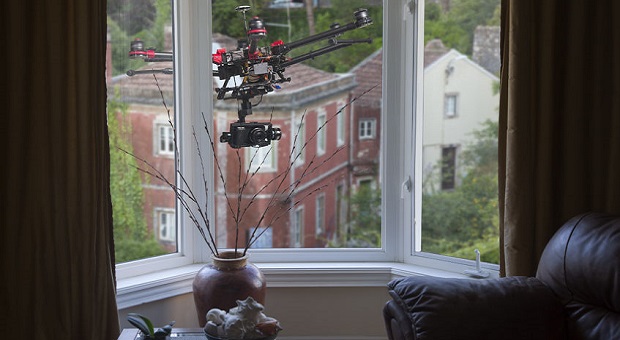

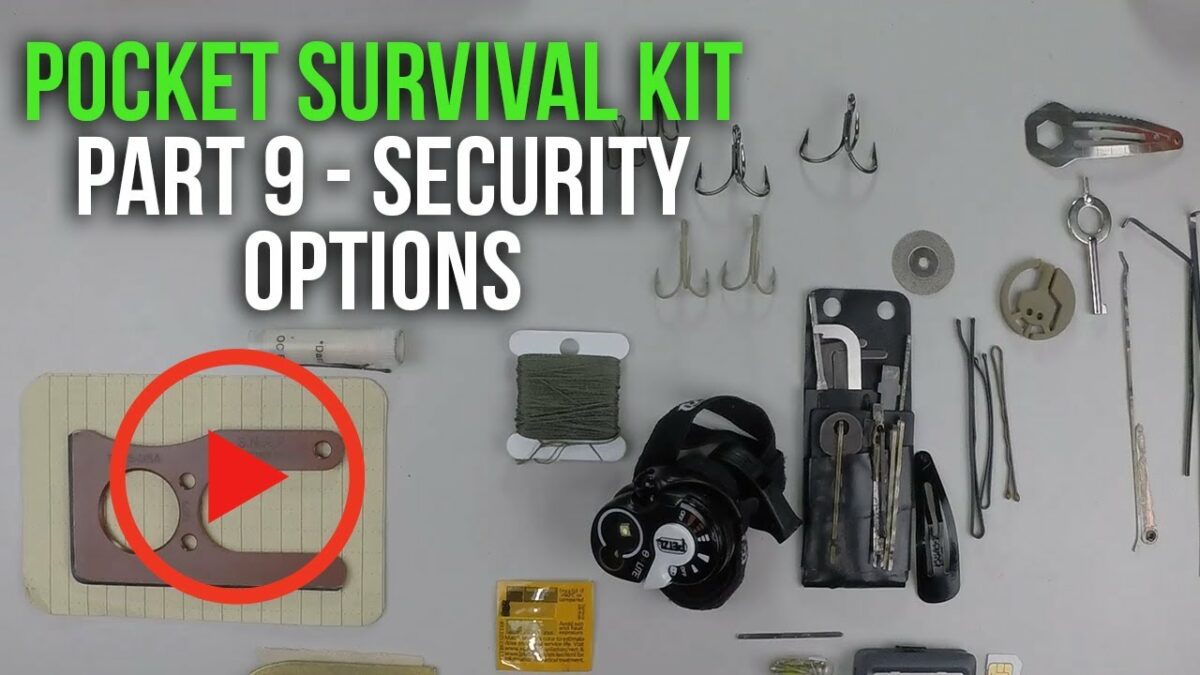
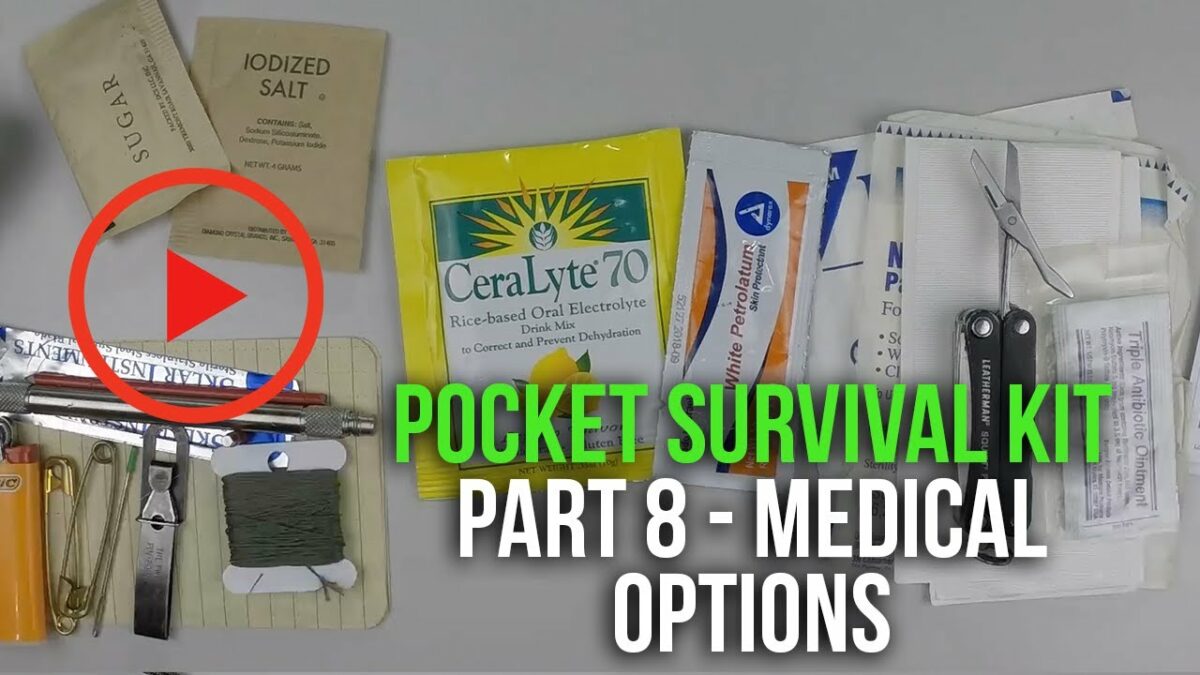
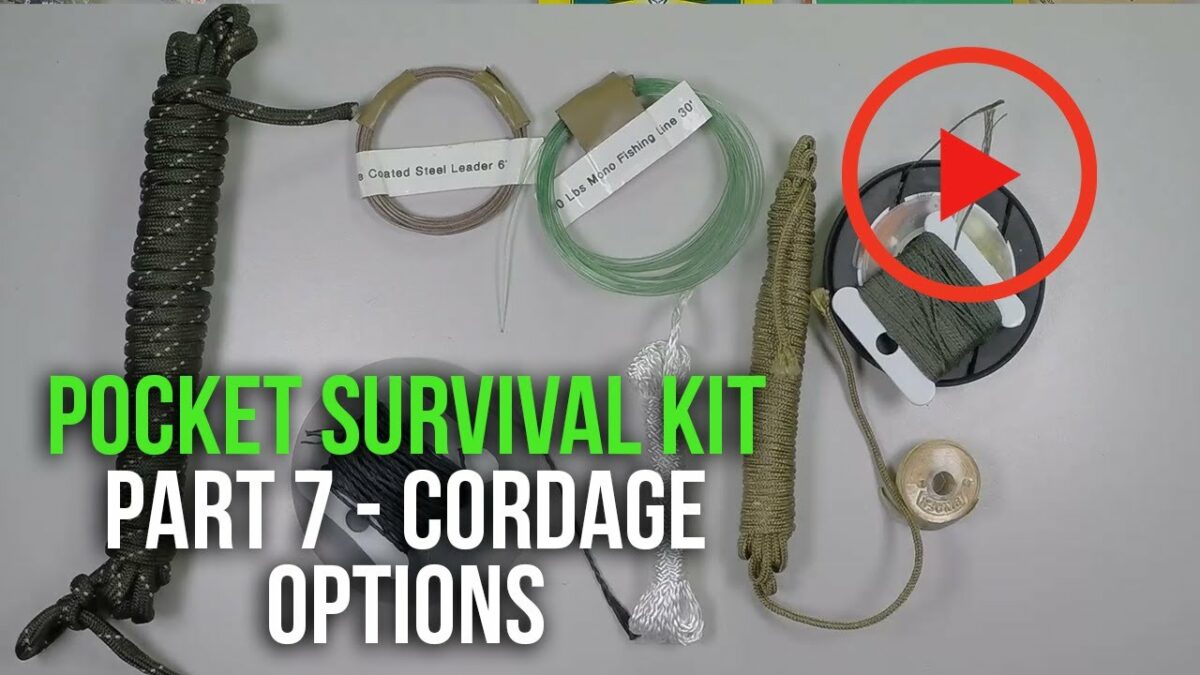
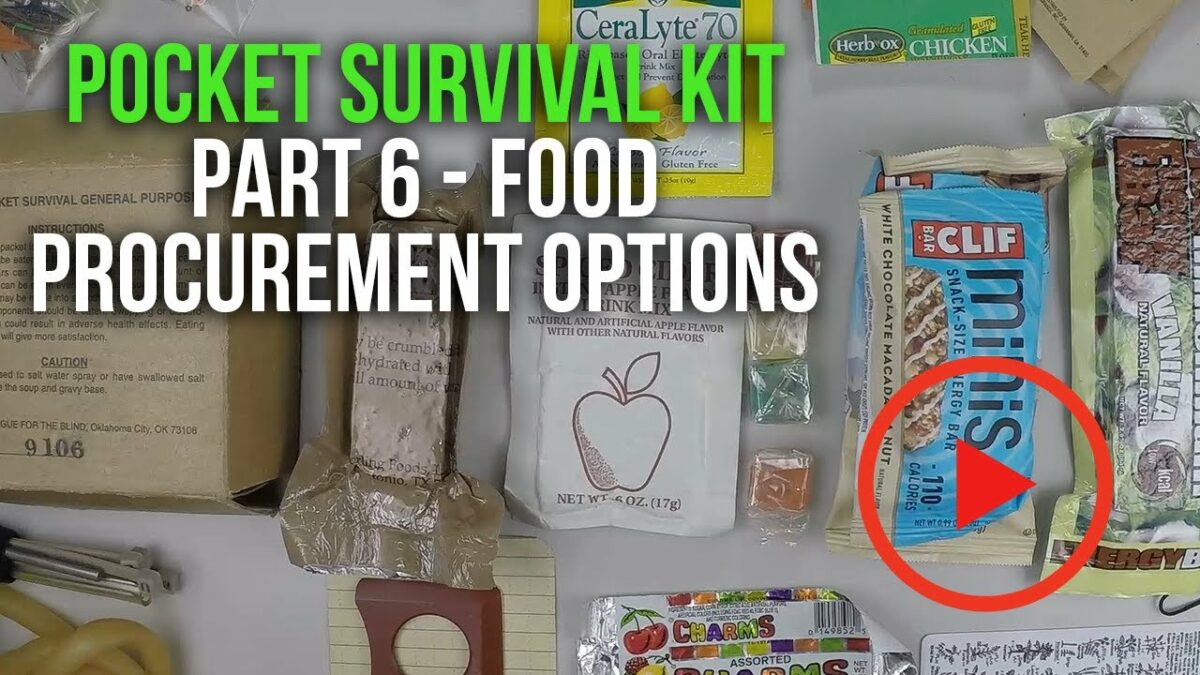

cATHERINE mCcOY | January 19, 2015
|
Great article. Ebay sells emergency blankets 10 for $4.45 – free shipping
Here is an article on the latest surveillance that might interest you:
http://www.informationclearinghouse.info/article40707.htm
cATHERINE mCcOY | January 20, 2015
|
Here is another good article on surveillance:
http://www.usatoday.com/story/news/2015/01/19/police-radar-see-through-walls/22007615
James Smith | January 19, 2015
|
What do you think of the stealth Land Shark???
https://www.land-shark.com/how-it-works#stealth
Mel Strickland | January 19, 2015
|
I need your “Snail Mail”information–RE: A possible joint business venture.
Mel Strickland
2315 Brookview Drive
McKinney, TX 75070-3845
Carlos | January 19, 2015
|
Great stuff but much of it sounds expensive and complex. I think if, God forbid, we’re in that type of a siege, we’ll be way past worrying about suits at the front door. Grab the shotgun and shoot some “birds”!
cATHERINE mCcOY | January 20, 2015
|
I wont be “bugging out” either. If it gets that bad, Im toast. I admire anyone who can do it. I have 40 emergency blankets for the bedroom so as not to provide free porno for imbeciles.
Carlos | January 20, 2015
|
Actually I would bug out if it came down to leaving our home or losing our lives. My family already had to do that in 1961 Cuba and they came back to rearrest my dad. Missed him by 1 day, woulda been 20 years in a political prison! I just meant I would shoot the drones if they were such a nuisance and take off. Then the drone can no longer track you.
Fox | January 20, 2015
|
I agree with you, Carlos. However, I would try to get at an angle so the lens was not pointed in my direction.
Better the drone is just written off without knowing what happened to it than to have your recorded image shooting it down. Be sure to find and completely destroy/bury the remains so there is not a visual indicator of where and how it was downed.
Mahatma Muhjesbude | January 27, 2015
|
Catherine, Why won’t you be bugging out?
cATHERINE mCcOY | January 27, 2015
|
Mahatma, I will bug out if it is just temporary. If the future is to be permanently eating bugs and snakes, I’d rather not be around.
Dennis | January 19, 2015
|
Just wondering…what about blinding the sensors with some of these 1+w handheld lasers?
Fox | January 20, 2015
|
Most snipers are aware, and you should be also, that even as little as 1/4″ thickness off aluminum sheeting will defeat thermal imaging scopes. It does not hide you, but turns your image into a blue blur.
If you stand erect you will still be identifiable as a human, but if you are down on all fours you will be indistinguishable from a dog or other four-legged animal.
cATHERINE mCcOY | January 20, 2015
|
Good idea. I dont think the mylar blankets will repel everything like X-Ray. Does anyone know?
Pingback:How To Hide From Drones - Patriot Rising | January 22, 2015
|
ben | January 25, 2015
|
So you have seen saab barracuda multispectral camouflage for sale, but where? Thanks!
Pingback:High-Tech Survival: How To Hide From Drones | Free Kentucky | February 11, 2015
|
Pingback:Privacy Apocalypse: 5 Devices That You Can't Hide From | Survival skills, survival guns, survival guide | April 2, 2015
|
Pingback:"Et tu, Brutus?" Is Your Church An NSA Spy? | Survivopedia | May 17, 2016
|
Diane C Lantz | August 5, 2016
|
Great write-up. That aided myself whole lot to be able to increase my own comprehending with this industry..
Thankyou.
Pingback:Make Your Survival Shelter Invisible With These 10 Tips | Survivopedia | February 15, 2018
|
Pingback:The End of 4th/A Liberty: Police Attack Drones Have Landed | Survivopedia | February 22, 2018
|
Diamond Almaras | February 27, 2018
|
Everything is very open with a clear explanation of the issues. It was really informative. Your site is very helpful. Thank you for sharing!